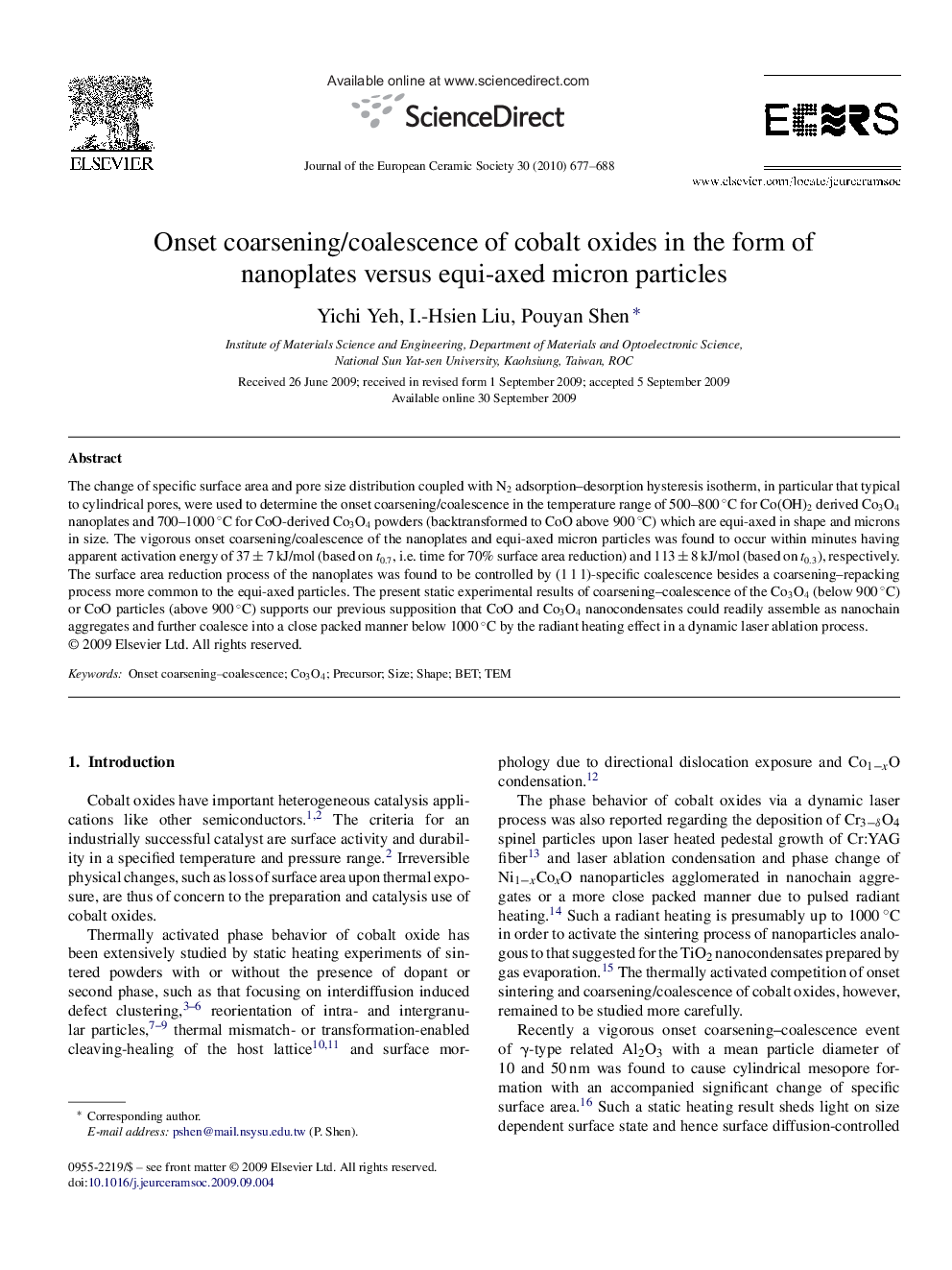| Article ID | Journal | Published Year | Pages | File Type |
|---|---|---|---|---|
| 1474919 | Journal of the European Ceramic Society | 2010 | 12 Pages |
The change of specific surface area and pore size distribution coupled with N2 adsorption–desorption hysteresis isotherm, in particular that typical to cylindrical pores, were used to determine the onset coarsening/coalescence in the temperature range of 500–800 °C for Co(OH)2 derived Co3O4 nanoplates and 700–1000 °C for CoO-derived Co3O4 powders (backtransformed to CoO above 900 °C) which are equi-axed in shape and microns in size. The vigorous onset coarsening/coalescence of the nanoplates and equi-axed micron particles was found to occur within minutes having apparent activation energy of 37 ± 7 kJ/mol (based on t0.7, i.e. time for 70% surface area reduction) and 113 ± 8 kJ/mol (based on t0.3), respectively. The surface area reduction process of the nanoplates was found to be controlled by (1 1 1)-specific coalescence besides a coarsening–repacking process more common to the equi-axed particles. The present static experimental results of coarsening–coalescence of the Co3O4 (below 900 °C) or CoO particles (above 900 °C) supports our previous supposition that CoO and Co3O4 nanocondensates could readily assemble as nanochain aggregates and further coalesce into a close packed manner below 1000 °C by the radiant heating effect in a dynamic laser ablation process.
